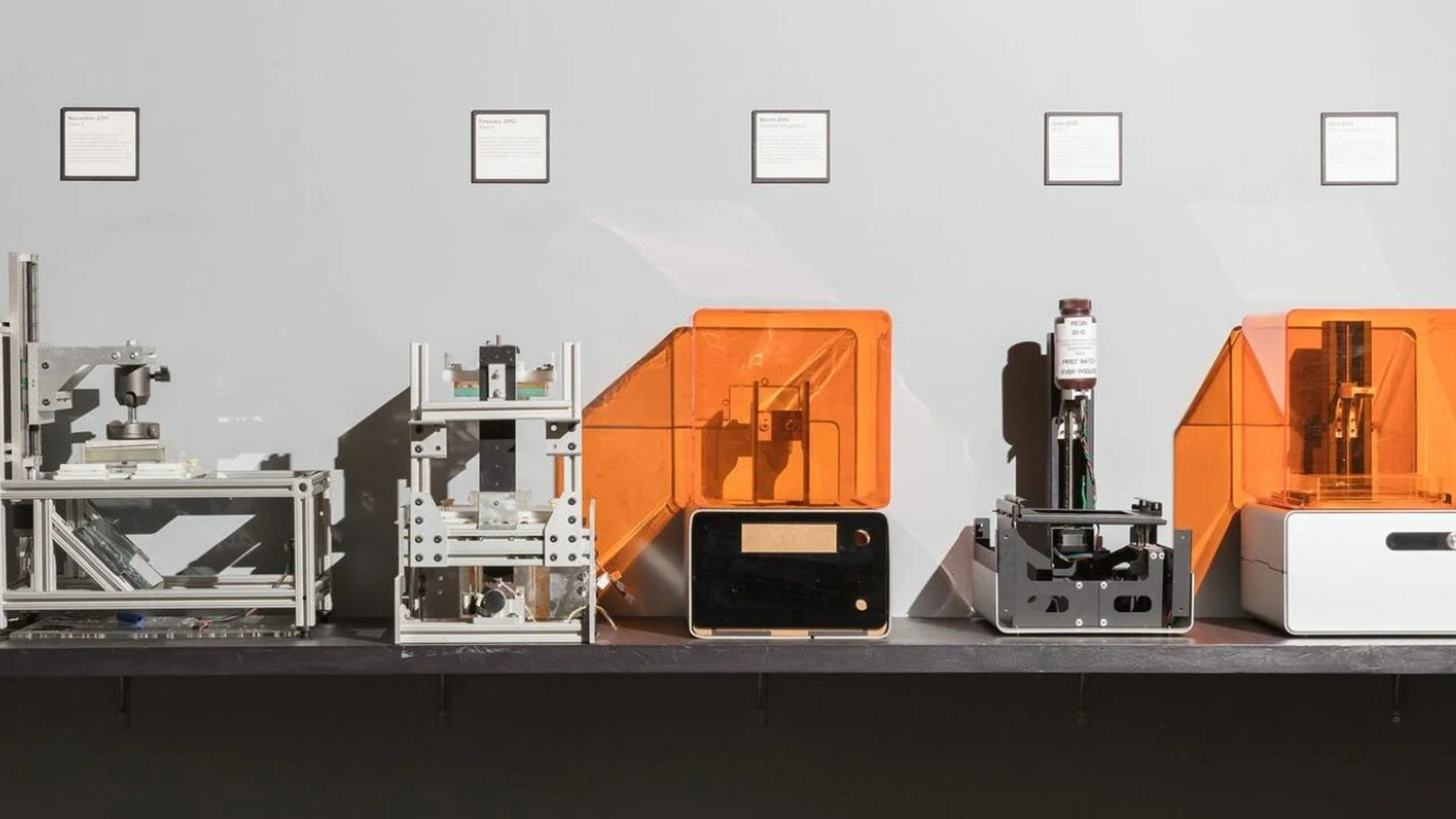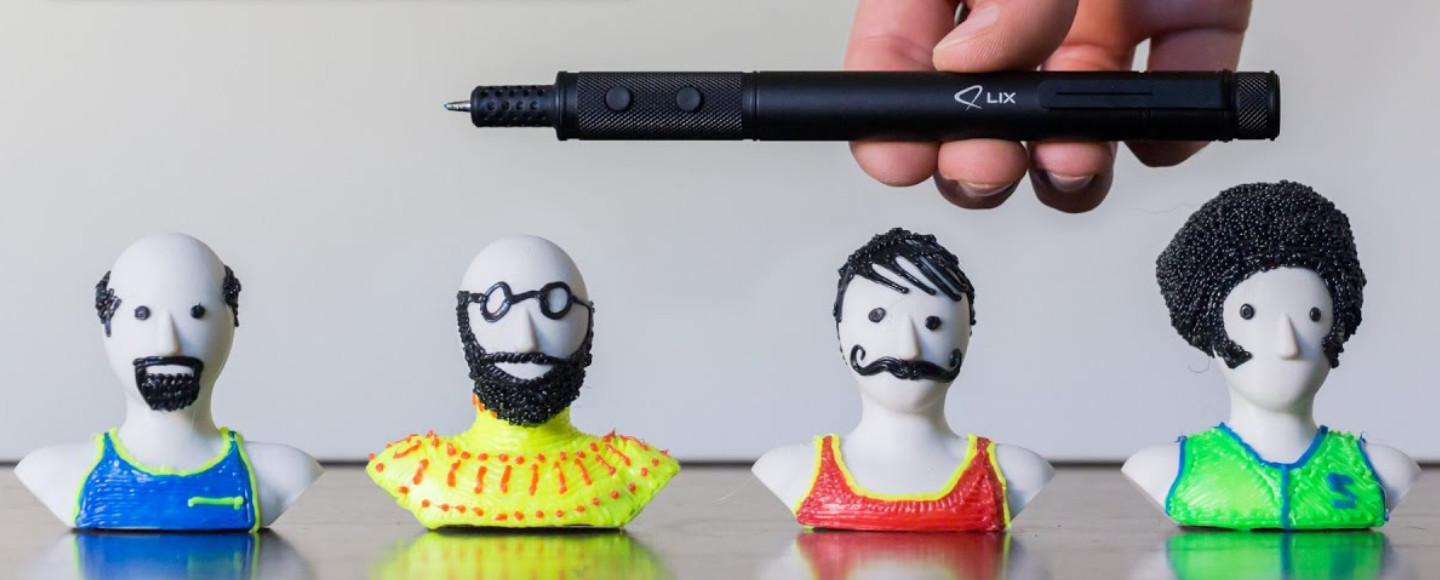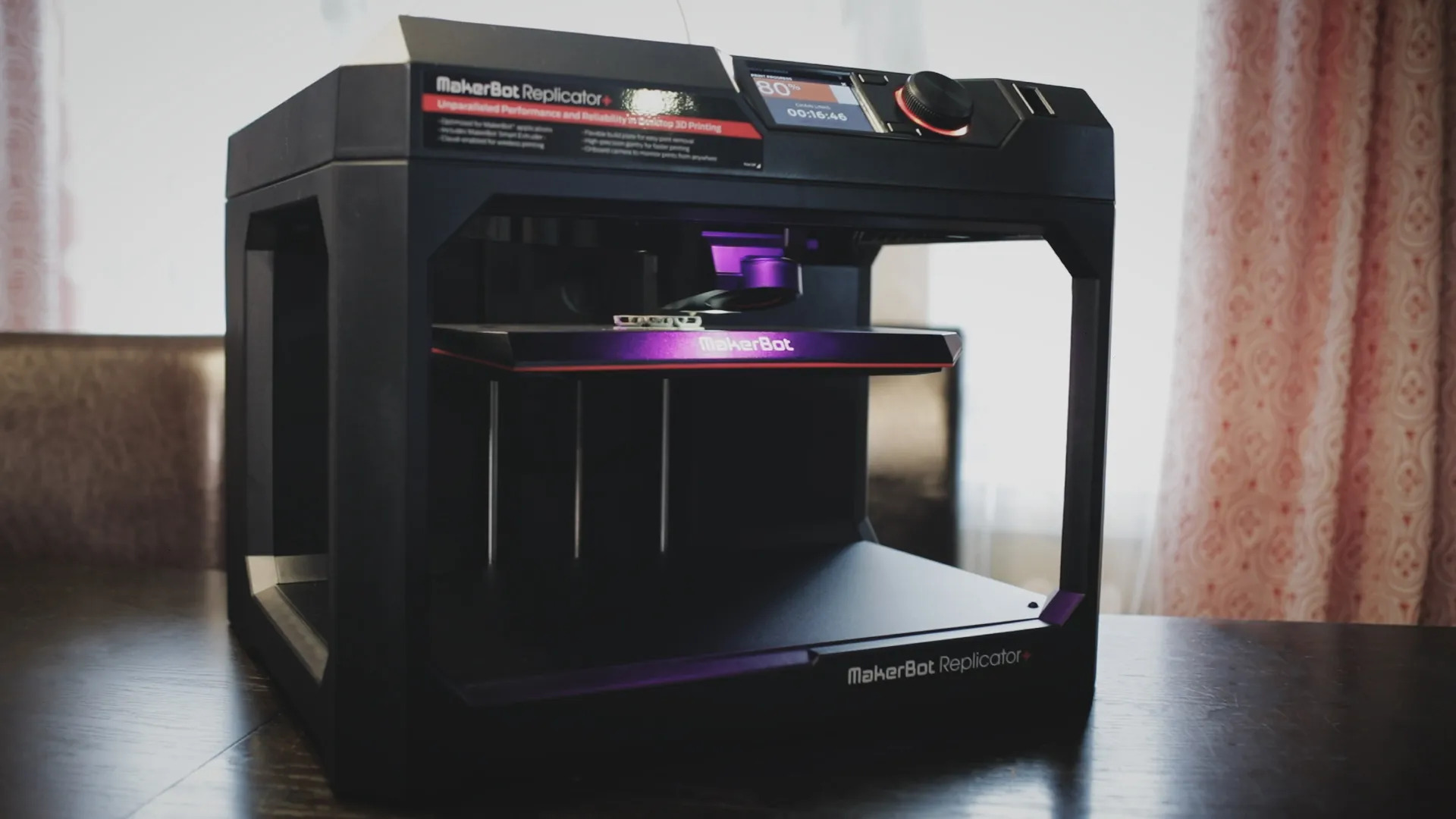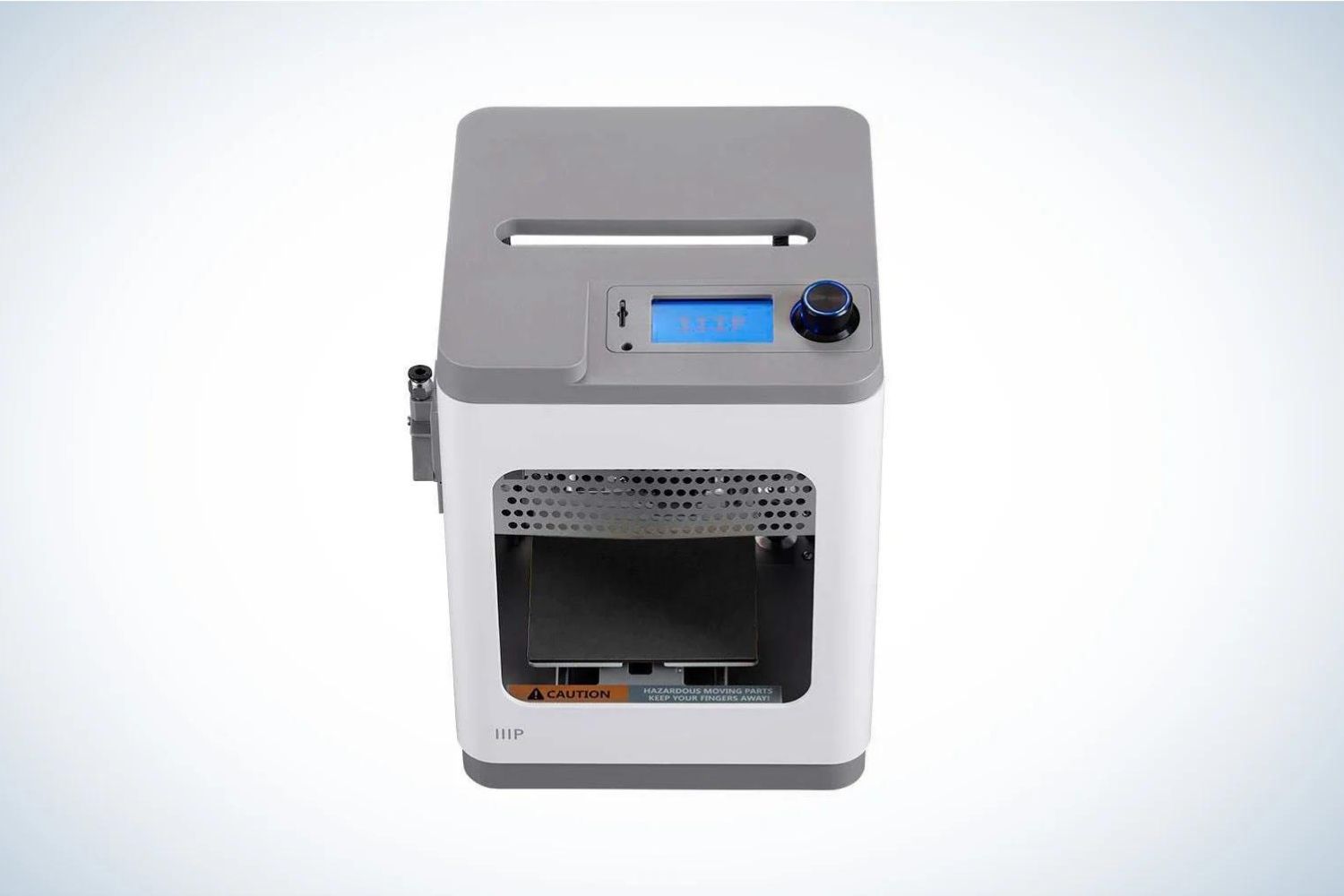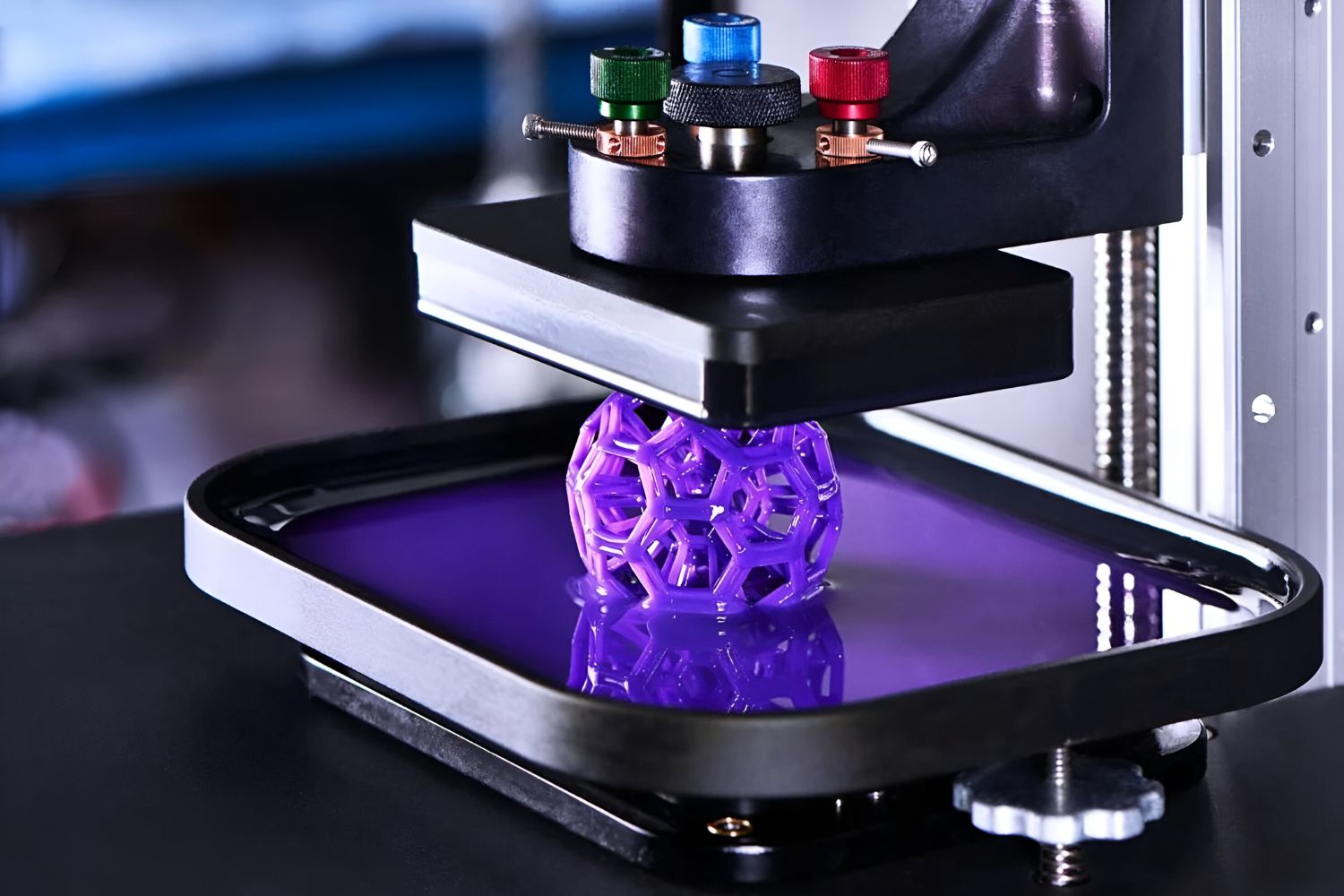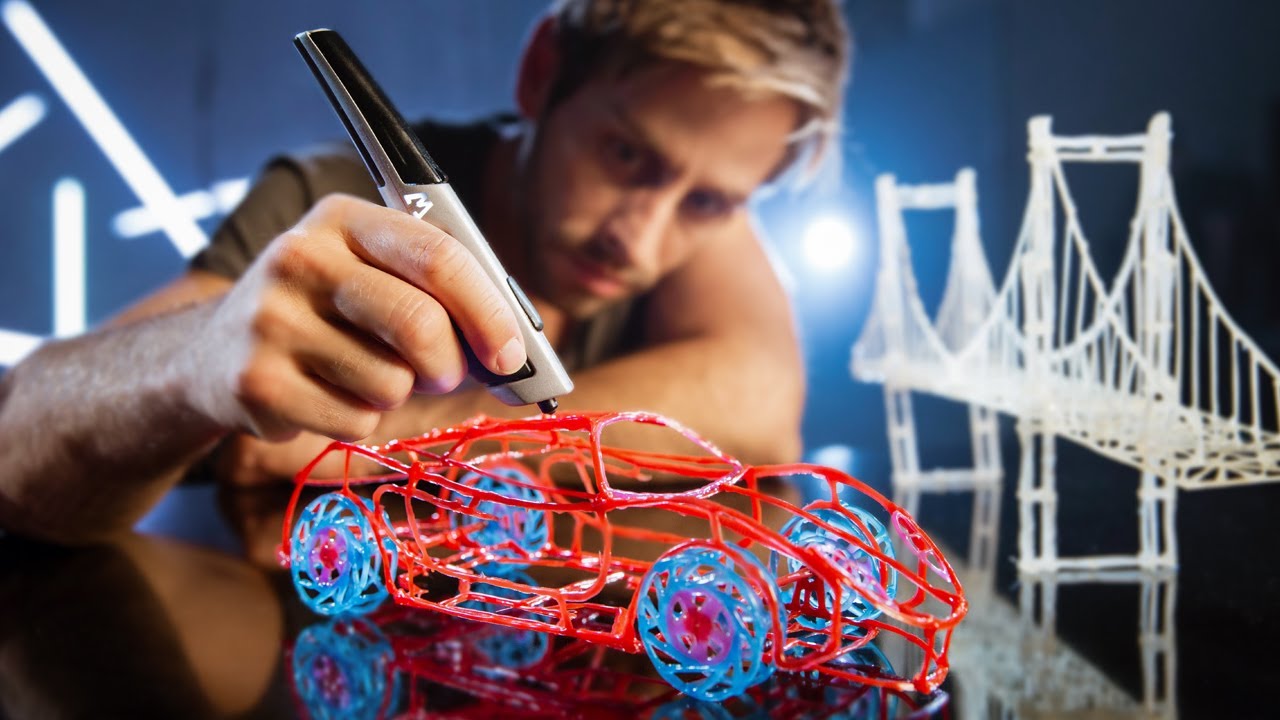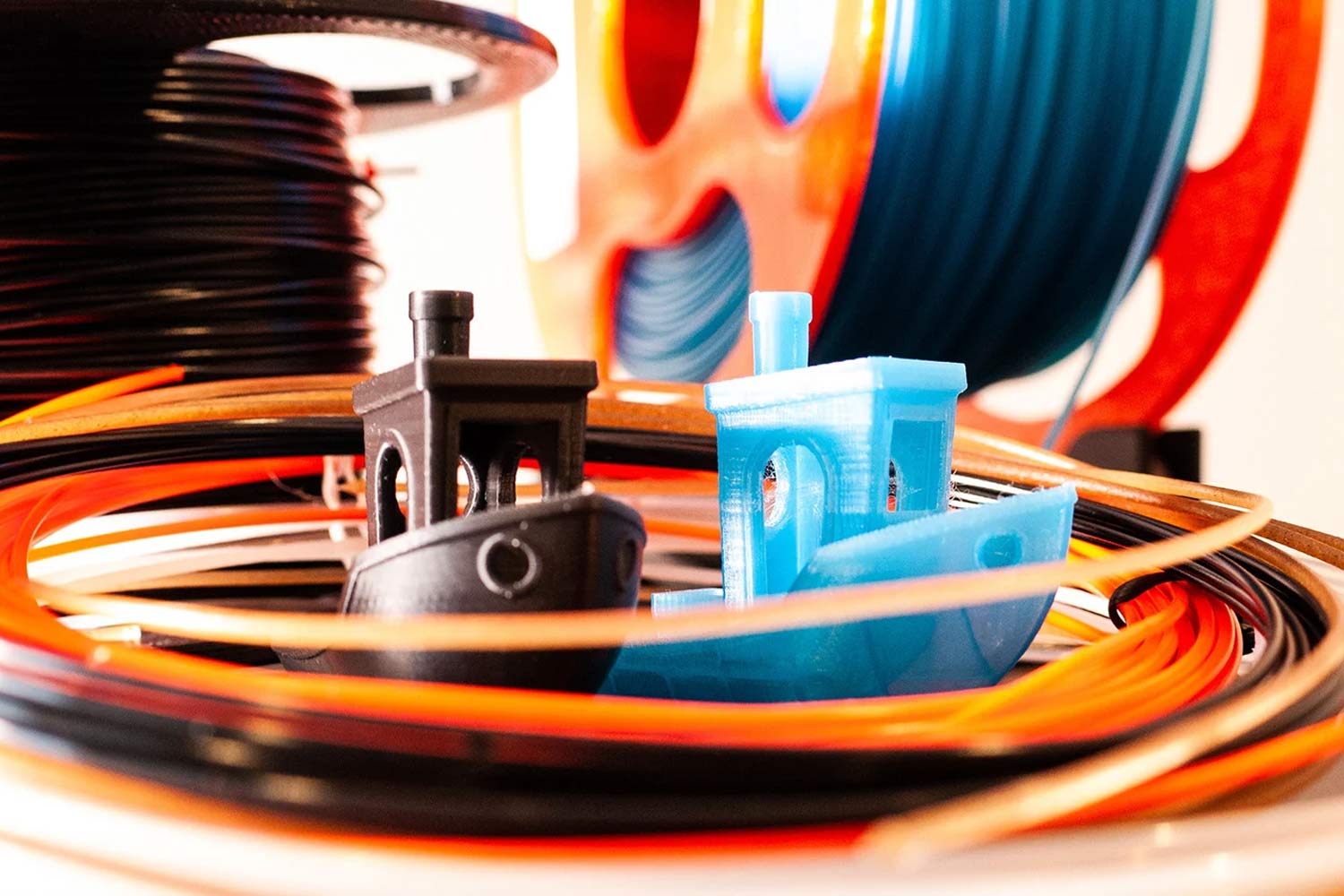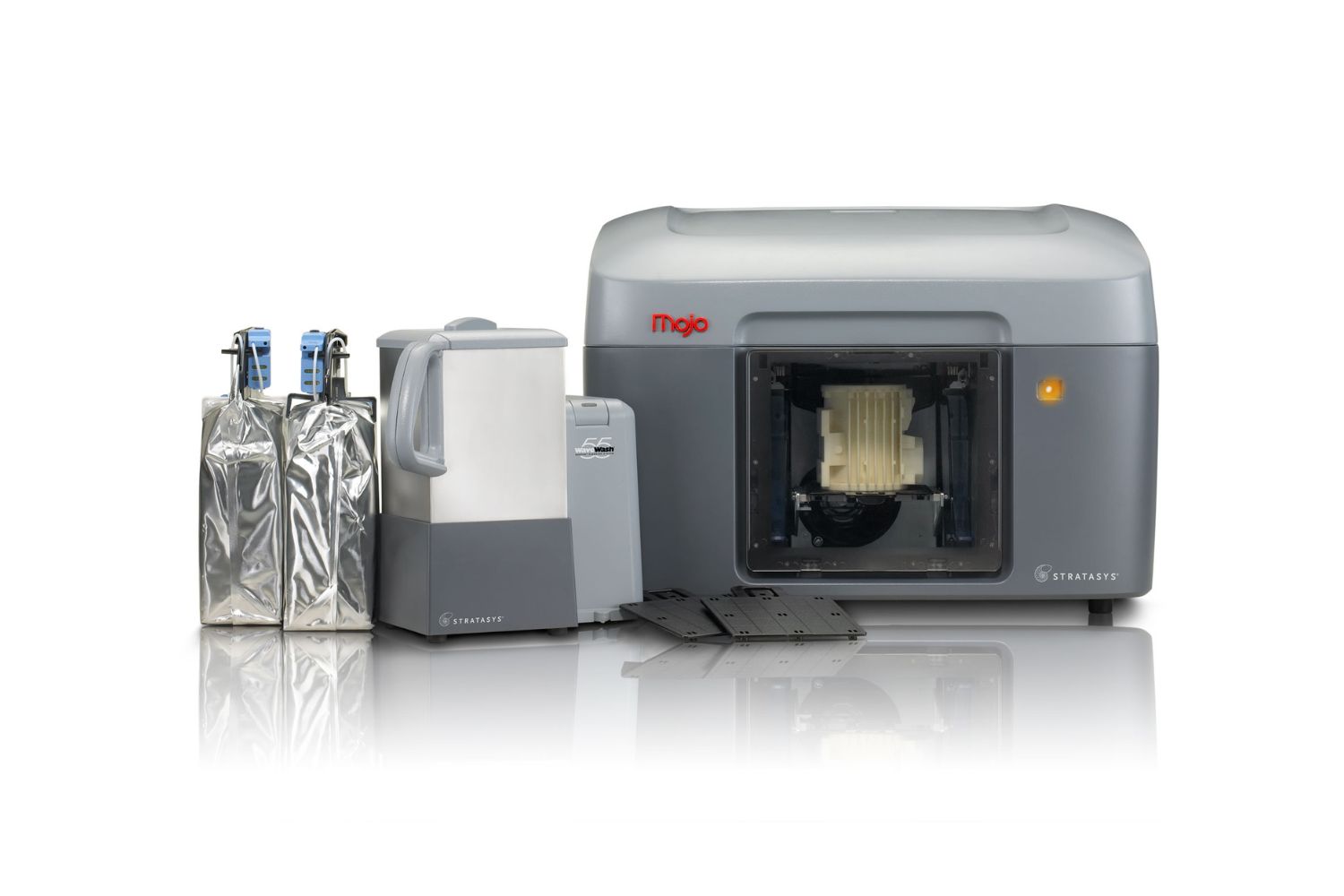Introduction
3D printing, also known as additive manufacturing, has revolutionized various industries over the past few decades. This innovative technology enables the creation of three-dimensional objects by layering materials based on a digital model. It has gained immense popularity for its ability to produce highly complex and customized designs with unmatched precision and speed.
The origins of 3D printing can be traced back to the 1980s when pioneering efforts began to develop this groundbreaking technology. Since then, 3D printing has come a long way and has transformed multiple sectors, including manufacturing, healthcare, architecture, and even fashion and art.
This article explores the timeline of 3D printing, from its humble beginnings to its widespread commercialization and advancements. We will delve into the impact of 3D printing on various industries and the current state of this technology.
3D printing has opened up a world of possibilities, allowing for the production of complex geometries that were previously unattainable. From creating prototypes for product development to manufacturing custom medical implants, this technology has disrupted traditional manufacturing processes and introduced new dimensions of innovation.
This article will provide an in-depth examination of the evolution of 3D printing, uncovering its early days, commercialization, and advancements. We will also discuss the current state of this technology and the profound impact it has had on various industries.
So, embark on this journey with us as we explore the remarkable history and remarkable potential of 3D printing.
The Origins of 3D Printing
The origins of 3D printing can be traced back to the early 1980s when a process called “stereolithography” was developed by Charles W. Hull. Hull, often considered the father of 3D printing, patented the stereolithography apparatus (SLA) in 1986. This groundbreaking process used a laser to solidify liquid resin, layer by layer, to create three-dimensional objects based on a computer-aided design (CAD) model.
Following the development of stereolithography, other additive manufacturing technologies emerged. In 1992, fused deposition modeling (FDM) was introduced by Scott Crump, founder of Stratasys. Instead of using liquid resin, FDM uses a process that involves extruding melted thermoplastic material layer by layer to create three-dimensional objects.
The early days of 3D printing were marked by limited capabilities and high costs, making it accessible only to select industries and researchers. However, as the technology progressed, it garnered growing interest and investment.
As more players entered the market, new and innovative 3D printing technologies were developed. Selective laser sintering (SLS), invented by Carl Deckard and Joe Beaman at the University of Texas at Austin in the late 1980s, enabled the use of powdered materials like nylon and metal to create objects through the selective melting of the powder using a laser.
The development of these foundational technologies paved the way for further advancements and the commercialization of 3D printing. The improved capabilities, reduced costs, and increased accessibility have allowed various industries to embrace the technology and unlock its full potential.
From rapid prototyping in the manufacturing sector to the creation of custom medical implants and even the production of intricate jewelry designs, 3D printing has transformed traditional manufacturing processes and introduced a new level of efficiency and customization.
As we move forward, it is essential to understand the impact that 3D printing has had on different industries and the innovative applications that continue to emerge. From the early days of stereolithography to the diverse range of additive manufacturing technologies available today, the transformative power of 3D printing is clear.
In the following sections, we will delve deeper into the commercialization and advancements of 3D printing, as well as its current state and the significant impact it has had on multiple sectors. So, let us continue our journey through the fascinating world of 3D printing.
The Early Days
The early days of 3D printing were characterized by limited access, high costs, and a lack of awareness. Although the concept of 3D printing had been established, the technology was only accessible to a few industries and researchers who had the resources to invest in the necessary equipment.
During this period, 3D printing primarily served as a tool for rapid prototyping. It allowed companies to quickly create physical models of their designs, enabling faster iteration and refinement in the product development process. This ability to rapidly produce prototypes was a game-changer, reducing time and costs associated with traditional manufacturing methods.
However, the adoption of 3D printing remained slow due to factors such as limited material options, slow printing speeds, and the challenges associated with scaling up the technology for mass production. Despite these hurdles, the potential of 3D printing was recognized by early adopters who foresaw its transformative impact on manufacturing and other industries.
As the technology progressed, advancements were made in materials and printing techniques. This led to the expansion of applications beyond rapid prototyping. The medical field, for example, began utilizing 3D printing to create patient-specific implants and prosthetics, revolutionizing the healthcare industry. Customized dental aligners, hearing aids, and even organs and tissue scaffolding became possible with the advent of 3D printing.
While 3D printing was initially limited to niche applications, the market began to witness a shift as more companies started developing and commercializing 3D printers. The competition spurred innovation and led to improvements in affordability, speed, and reliability of 3D printers.
The early days of 3D printing also brought about a surge of interest from the maker community, artists, and designers. The accessibility of 3D modeling software and the availability of online platforms for sharing and downloading designs democratized the creative potential of 3D printing. Artists began experimenting with 3D-printed sculptures, jewelry, and fashion pieces, pushing the boundaries of what was considered possible in the realm of artistic expression.
As 3D printing continued to gain traction, it caught the attention of larger corporations and investors, leading to increased funding and research in the field. This influx of resources resulted in significant advancements, such as the development of high-resolution printers, multi-material printing capabilities, and the ability to print with advanced materials like metals and ceramics.
In the next section, we will explore the commercialization and further advancements that propelled 3D printing into mainstream adoption. We will also discuss the current state of 3D printing and its ever-expanding range of applications. Join us as we continue our journey through the evolution of this groundbreaking technology.
Commercialization and Advancements
In recent years, 3D printing has experienced a rapid surge in commercialization and advancements, making it more accessible and practical for a wide range of industries. As the technology matured, companies recognized the potential of 3D printing to revolutionize their manufacturing processes and bring a new level of innovation to their products.
One of the key drivers of commercialization was the increasing affordability of 3D printers. As competition grew, manufacturers began offering more cost-effective options, enabling small businesses and individuals to invest in their own 3D printing capabilities. This democratization of technology opened up a world of possibilities for innovation and customization.
Advancements in printing materials played a pivotal role in expanding the applications of 3D printing. From the early days of using plastics, researchers and companies developed a wide range of materials suitable for 3D printing, including metals, ceramics, glass, and even biocompatible materials. These new materials allowed for the creation of functional prototypes, end-use parts, and products with diverse properties and characteristics.
The scalability of 3D printing technology was another crucial factor in its commercialization. As printers became faster and more efficient, companies started implementing 3D printing in their production lines, enabling on-demand manufacturing and reducing lead times. This shift towards additive manufacturing disrupted traditional supply chains and allowed for more agile and cost-effective production methods.
Furthermore, advancements in software and design tools have significantly improved the ease and efficiency of 3D modeling and printing. User-friendly interfaces and intuitive software allow even novices to create intricate designs without extensive technical expertise. Additionally, the integration of artificial intelligence and machine learning algorithms has optimized the printing process, enhancing print quality and reliability.
Industry-specific applications of 3D printing have also emerged as a result of commercialization and advancements. In the aerospace industry, for example, 3D printing is used to manufacture lightweight components with complex geometries, reducing weight and improving fuel efficiency. In healthcare, 3D printing is revolutionizing patient care by enabling the creation of personalized medical devices, prosthetics, and even human tissue and organs.
The commercialization of 3D printing has also led to collaborations between industries, universities, and research institutions. These partnerships have fostered innovation and further fueled the development of new applications and techniques. With ongoing advancements and optimization in various industries, the potential of 3D printing continues to expand.
In the next section, we will explore the current state of 3D printing and the impact it has had on industries ranging from manufacturing to healthcare. Join us as we delve deeper into the transformative power of this groundbreaking technology.
Current State of 3D Printing
The current state of 3D printing reflects a technology that has come a long way since its early days. With advancements in hardware, software, and materials, 3D printing has become more reliable, efficient, and versatile. Today, it has made its way into various industries, bringing with it a multitude of benefits and innovations.
One of the notable advancements in 3D printing technology is the improved printing speed. With faster printing capabilities, manufacturers can produce parts and prototypes at a much higher rate, reducing production time and increasing overall productivity. This has made 3D printing a viable option for mass production, especially for complex designs that are difficult to manufacture using traditional methods.
The range of materials available for 3D printing has also expanded significantly. In addition to plastic filaments, there are now options for printing with metals, ceramics, composites, and even bioink for bioprinting applications. This broadened material palette has opened up possibilities for creating functional and customized objects across various industries, from automotive parts to dental implants.
The size of printable objects has increased as well. While early 3D printers were limited in terms of build volume, there are now industrial-scale printers capable of creating large-scale objects, such as furniture, architectural models, and even housing components. This scalability has brought 3D printing into sectors that previously relied on traditional manufacturing methods.
Another significant development in the current state of 3D printing is the widespread adoption of design software and tools. CAD software has evolved to accommodate the unique requirements of 3D printing, providing users with intuitive interfaces, advanced modeling capabilities, and simulation tools that optimize designs for printing. These software advancements have made the creation and modification of 3D models more accessible to designers, engineers, and hobbyists.
Furthermore, the accessibility and affordability of 3D printers have increased, allowing more individuals and small businesses to incorporate this technology into their workflows. Desktop 3D printers are now widely available, making it possible for anyone to experiment and create 3D-printed objects from the comfort of their own home or office.
3D printing has made a significant impact across industries. In manufacturing, it has revolutionized rapid prototyping, enabling iterative design improvements, reducing costs, and accelerating time to market. In healthcare, it has transformed the way medical devices and prosthetics are created, leading to personalized and more comfortable solutions for patients. Additionally, the field of bioprinting shows promising potential for regenerative medicine and organ transplantation.
Other sectors, such as architecture, education, automotive, and fashion, have also seen the adoption of 3D printing for various applications. From creating intricate architectural models to producing custom car parts and unique fashion accessories, 3D printing continues to push boundaries and unlock new opportunities.
As the technology continues to advance, ongoing research aims to address challenges such as improving print speed, expanding material options, and enhancing the scalability of 3D printing. With each new development, the possibilities of 3D printing expand, giving rise to a future where on-demand manufacturing and customized products are the norm.
In the following section, we will delve into the impact of 3D printing on various industries and discuss the potential future developments and applications that lie ahead. Join us as we explore how this remarkable technology is shaping the world around us.
Impact of 3D Printing
The impact of 3D printing has been far-reaching, disrupting traditional manufacturing processes and unlocking a new world of possibilities across various industries. This groundbreaking technology has revolutionized the way products are designed, prototyped, and manufactured, leading to greater efficiency, customization, and innovation.
One of the most significant impacts of 3D printing is in the domain of rapid prototyping. It has drastically reduced the time and cost associated with creating physical prototypes, allowing for faster design iterations and product improvements. This has led to a more streamlined product development process, enabling companies to bring innovative products to market faster and gain a competitive edge.
In the manufacturing industry, 3D printing has disrupted traditional supply chains. Instead of relying on complex and costly assembly lines, 3D printers can produce complex geometries and assemblies in a single print, eliminating the need for multiple components and reducing material waste. This has led to more sustainable manufacturing practices and cost savings for businesses.
Furthermore, 3D printing has given rise to on-demand manufacturing. By eliminating the need for large-scale production runs and maintaining extensive inventories, companies can now manufacture products as they are needed. This reduces excess inventory and storage costs while enabling more responsive production to meet changing demands and customization requests.
The healthcare industry has also been significantly impacted by 3D printing. Personalized medical devices, such as implants and prosthetics, can be precisely tailored to individual patients’ needs, resulting in better-fitting and more comfortable solutions. Additionally, 3D printing has enabled the production of complex anatomical models, aiding in pre-operative planning, surgical simulations, and medical education.
In the aerospace and automotive sectors, 3D printing has played a crucial role in lightweighting. By designing and fabricating components with intricate lattice structures, weight can be reduced without compromising strength or functionality. This leads to improved fuel efficiency in aircraft and vehicles, contributing to a greener and more sustainable future.
Another significant impact of 3D printing is in the world of art, design, and creativity. Artists and designers can now explore new forms, shapes, and textures that were previously difficult to achieve using traditional techniques. 3D printing has democratized the creation process, allowing individuals to turn their ideas into physical objects and fostering a culture of innovation and expression.
Education has also been transformed by 3D printing. By integrating 3D printing technology into curricula, students can gain hands-on experience in digital design and fabrication. This fosters critical thinking, problem-solving skills, and a deeper understanding of STEM subjects. As 3D printing becomes more accessible, students can also bring their concepts to life, fostering creativity and nurturing a new generation of innovators.
Looking ahead, the impact of 3D printing is set to continue expanding as the technology becomes more advanced and affordable. From construction to food, from electronics to bioprinting, the possibilities for 3D printing applications are ever-increasing. As more industries embrace this transformative technology, we can expect to see even more innovative solutions, increased personalization, and a further revolution in how we design, create, and manufacture.
Conclusion
3D printing has come a long way since its inception in the 1980s, evolving from a niche technology to a transformative force across industries. From its humble beginnings, 3D printing has grown to revolutionize manufacturing, healthcare, art, and more, bringing unprecedented levels of customization, efficiency, and innovation.
The origins of 3D printing can be traced back to the pioneering efforts of individuals such as Charles W. Hull and Scott Crump, who developed groundbreaking technologies like stereolithography and fused deposition modeling. These early advancements paved the way for the commercialization and widespread adoption of 3D printing.
As the technology progressed, 3D printing became more accessible and affordable, leading to increased adoption in various industries. It has transformed traditional manufacturing processes by enabling rapid prototyping, on-demand manufacturing, and the creation of complex geometries that were previously unattainable.
Today, the impact of 3D printing is evident across sectors such as aerospace, automotive, healthcare, and education. It has revolutionized product development, supply chain management, and personalized healthcare solutions. 3D printing has also opened up new avenues for creativity, allowing artists, designers, and makers to explore unique forms and materials.
The current state of 3D printing is marked by advancements in hardware, software, and materials, making it faster, more versatile, and more accessible than ever before. With ongoing research and development, we can expect to see further improvements in speed, scalability, and material options, expanding the possibilities of 3D printing.
Looking ahead, the future of 3D printing holds immense potential. From construction and food to electronics and bioprinting, 3D printing will continue to disrupt industries and push the boundaries of what is possible. As this technology becomes more advanced and widely adopted, we can expect to see a new era of manufacturing, where customization, sustainability, and efficiency are at the forefront.
In conclusion, 3D printing has revolutionized the way we create, manufacture, and innovate. Its impact on industries and society at large is undeniable, and the possibilities for further advancements and applications are endless. As 3D printing continues to evolve, it will shape the future of design, production, and the way we interact with products, leaving a lasting legacy in the realm of manufacturing and beyond.







